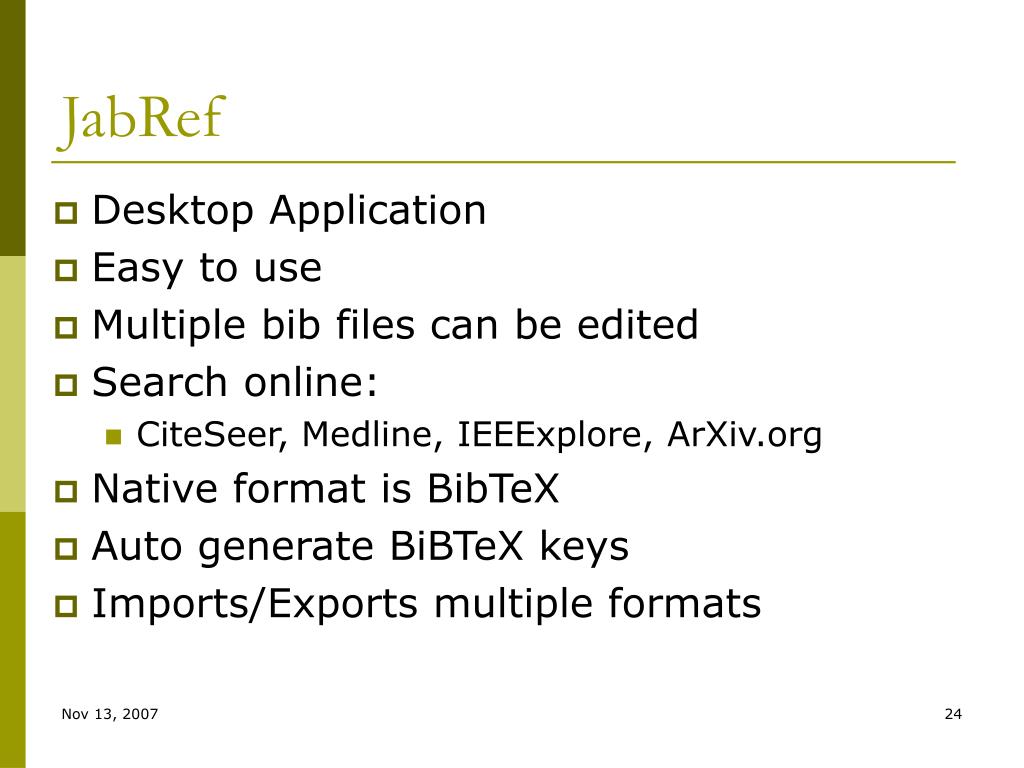

#Using jabref mac os
The application is programmed in Java, and is maintained for Windows, Linux and Mac OS X, it is available free of charge and is actively developed. JabRef has a target audience of academics and many university libraries have written guides on its usage.
#Using jabref license
JabRef has been released under the terms of MIT license since version 3.6 (and was under the GPL license before). JabRef provides an interface for editing BibTeX files, for importing data from online scientific databases, and for managing and searching BibTeX files. The original version was released on November 29, 2003. The name JabRef stands for Java, Alver, Batada, Reference. It uses BibTeX and BibLaTeX as its native formats and is therefore typically used for LaTeX. JabRef is an open-sourced, cross-platform citation and reference management software. This project is licensed under the MIT License.Brazilian Portuguese, Chinese (simplified), Chinese (classical), Danish, Dutch, English, Farsi, French, German, Greek, Indonesian, Italian, Japanese, Korean, Norwegian, Polish, Portuguese, Russian, Spanish, Swedish, Tagalog, Turkish, Vietnamese

Literature review section (optional): This section contains any comments or notes related to the entry.Title section: This section contains the title of the entry.Īsset section: This section contains the citation key and a link to the file associated with the entry (if any).Entries section: This section contains the links to all entries associated with this group.Įach literature entry page has the following layout:.Roadmap section: This section contains the links to source- and sub-groups of the group.Title section: This section contains the title of the group.Markdown LayoutĮach group page has the following layout: When outputting to the same folder again, it's recommended to quit Obsidian first. The file structure of the output folder is organized as follows: The file for each group contains a list of entries that belong to that group. Groups: This folder contains a Markdown file for each group in your JabRef repository.Each file contains information about the entry such as its title, author, and citation key. Notes: This folder contains a Markdown file for each entry in your JabRef repository.The root folder contains two sub-folders: The output of jabref2obsidian is a set of Markdown files that are organized into a folder structure. Markdown pages for each group in your JabRef repository.

Markdown pages for each entry in your JabRef repository.
#Using jabref install
To run the scripts, you will need to install the necessary packages listed in requirements.txt.Īfter installing the necessary packages, you can use the example script to generate: 1 UsageĮxample scripts are stored in the examples/ folder. This makes it easier to view your JabRef repository on any platform, including iPad where JabRef is currently not available. Jabref2obsidian is a tool that allows you to convert your JabRef biblatex repository to Obsidian markdown notes.


 0 kommentar(er)
0 kommentar(er)
